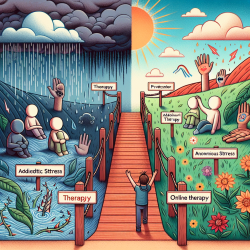Understanding the Impact of Appearance on Occupational Success
In the realm of occupational success, appearance plays a surprisingly significant role. Research by Little and Roberts (2012) in their article "Evolution, Appearance, and Occupational Success" highlights how visual characteristics, including facial appearance, influence judgments and decisions in various settings. This blog delves into the findings of this research, offering insights for practitioners to improve their skills and outcomes for children.
The Role of Appearance in Occupational Settings
Appearance-based biases are pervasive, influencing hiring decisions and even election outcomes. For instance, taller individuals are often perceived as more authoritative, which can lead to higher earnings and greater occupational success. Similarly, attractiveness is associated with positive personality attributions and increased opportunities in the workplace. These biases are thought to be rooted in evolutionary theories of coalition formation and leadership choice.
Task-Congruent Selection: A Key Insight
One of the critical concepts introduced by Little and Roberts is "task-congruent selection." This idea suggests that individuals whose appearance aligns with perceived task competencies are more likely to be selected for specific roles. For example, during wartime, dominant-appearing leaders may be favored, while in peacetime, leaders with strong interpersonal skills may be preferred. This highlights the importance of matching appearance to task-specific competencies in selection processes.
Implications for Practitioners
For practitioners, understanding these biases can lead to more effective strategies in occupational settings. By recognizing the impact of appearance, practitioners can work to mitigate biases and promote equitable treatment. Additionally, they can guide individuals in enhancing their presentation to align with desired roles, potentially improving their occupational outcomes.
Encouraging Further Research
While the research provides valuable insights, it also opens the door for further exploration. Practitioners are encouraged to delve deeper into the nuances of appearance-based biases and their implications in various occupational contexts. By doing so, they can contribute to a more comprehensive understanding of how to optimize outcomes for individuals, particularly children, in educational and therapeutic settings.
To read the original research paper, please follow this link: Evolution, Appearance, and Occupational Success.










